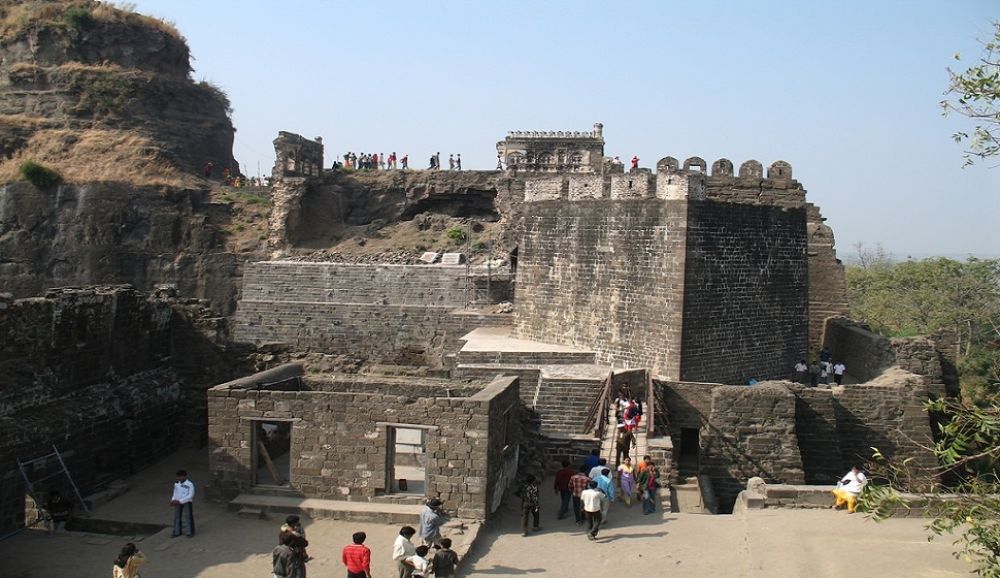

Located in the state of Maharashtra, India, Daulatabad Fort stands as a formidable monument of Indian history. Initially known as Devagiri or "Hill of Gods," the fort dates back to the 12th century when it was an important upland capital under the Yadava dynasty. It was later renamed Daulatabad, meaning "City of Fortune," by Muhammad bin Tughluq, who shifted the capital from Delhi to Daulatabad in the 14th century, albeit briefly.
The fort's tourism history is closely linked to Aurangabad's popularization as a tourist destination, which saw a significant rise after the discovery and subsequent promotion of the Ajanta and Ellora Caves—UNESCO World Heritage Sites that are located nearby. As travelers flocked to these caves, Daulatabad Fort became an essential stop-over, admired for its robust and complex engineering, which includes an imposing moat, subterranean escape passages, and an intricate series of defenses.
In the 19th and early 20th centuries, Daulatabad became an object of interest among British officers and historians who started documenting the fort's unique architecture and historical significance. These accounts gave the fort international exposure and seeded interest among potential tourists. However, it was only post-India’s independence in 1947 that concerted efforts were made to preserve the site and promote it as a tourist destination.
The Archaeological Survey of India (ASI) played a pivotal role in the fort’s conservation, conducting extensive research and restoration work to preserve its integrity. As historical heritage gained importance in the national consciousness, Daulatabad Fort witnessed increased domestic and international footfall.
In recent years, tourism at Daulatabad Fort has evolved to meet the changing demands of visitors. There's a rising trend towards experiencing historical sites through the prism of cultural and educational enrichment. Interactive guides, light and sound shows, and historical reenactments have become more common, bringing the fort's rich history to life in new and engaging ways.
Eco-friendly tourism has also gained traction, with a focus on preserving the natural landscape around the fort and encouraging sustainable travel practices among tourists. Additionally, with the advent of digital media, virtual tours and informational apps have become increasingly popular, allowing people from around the globe to explore Daulatabad Fort remotely.
Despite the challenges posed by the global pandemic, tourism at Daulatabad Fort is adapting by implementing safety protocols to ensure the health and security of visitors. Cleanliness drives, social distancing measures, and contactless ticketing are some of the initiatives undertaken to make tourism safe and responsible in the current scenario.
As tourism continues to be an essential aspect of Maharashtra's economy, the state government is actively promoting Daulatabad Fort alongside other historical attractions in the region. The fort stands as a testament to India's rich heritage, attracting historians, architecture enthusiasts, and tourists from all walks of life, making it a cherished jewel in the crown of Indian tourism.